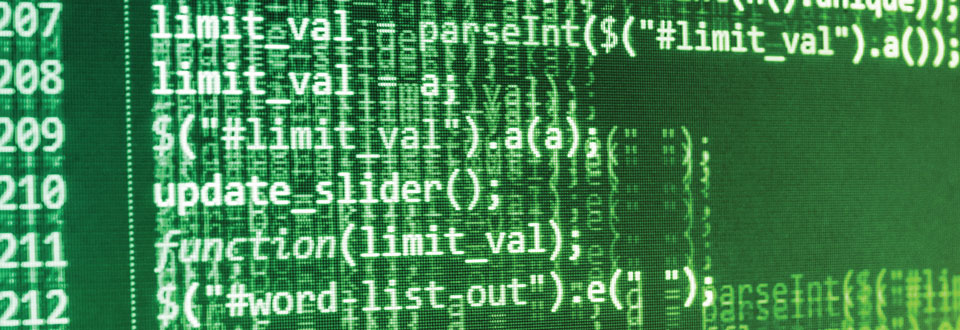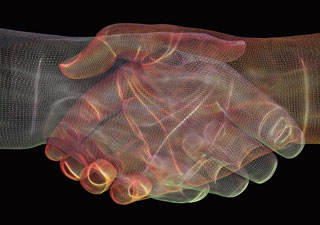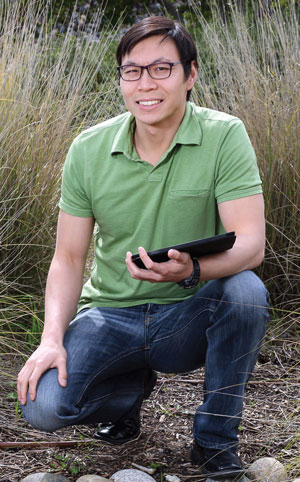Critical systems should be resilient against attempts to compromise them, cradle to grave


To establish the safety and security of a given technology — as well as its ability to achieve new mission capabilities — the U.S. government calls for repeated demonstration of the technology’s effectiveness.
However, increasing dependence on commercial technologies may expose critical government systems to potential malicious alterations during their life cycle. Can these systems be trusted to perform their intended function when called upon?
When the complexities of the development environment elude conventional analysis, a new approach is needed to ensure highly reliable, critical systems.
At the forefront of creating such an approach, Sandia has initiated cross-discipline research and development that addresses the complete spectrum of life cycle threats — including insider and supply chain threats — to the integrity and performance of critical systems.
In this quest, Sandia is partnering with federal agencies, other Department of Energy laboratories and plants, and universities to bring strength and focus to the challenge. Also key is engaging with researchers who reflect the breadth, depth and cross-cutting emphasis of Sandia’s many different science and engineering disciplines to advance understanding of, and mitigations for, the risks critical systems might encounter in the development environment. These researchers are exploring a range of questions:
- Designing for trustworthy/self-auditable systems: What technologies in the design can increase the resiliency of critical systems to compromise and also monitor the health of the system throughout its lifecycle? Can we design for simplicity to reduce the risk space?
- Threat discovery/analysis technologies: Can we apply what we learn about threats to critical systems to recognize and understand previously unknown threats?
- Managing risk: How can technology help decision makers manage the risks associated with untrustworthy content? Is it possible to quantify trustworthiness?
The Trusted Systems and Communications Research Challenge is using quantifiable engineering-based approaches to evaluate and improve trustworthiness. As part of this project, Sandia is launching two efforts focused on:
- Foundational techniques to support analysis of trustworthiness: Sandia is leveraging existing research in areas such as game theory, supply chain analytics and risk assessment to develop approaches for analyzing trust.
- Use of diversification to improve trust: Sandia is developing verification-based analysis techniques to identify ways to create diversification within systems to increase the difficulty the attacker faces and minimize the impacts of successful attacks.
This research, if successful, will advance the ability to conduct quantitative analysis of trust and lay the groundwork for future development of completely objective techniques for the analysis and synthesis of trust — and also promises to help address challenges in similar problem areas.
Meet Gio Kao
Education was a big deal around Gio Kao’s house. Not just science and math, but art, music and history. “Both my parents are in STEM. Both are math majors,” Kao says. “But we took art lessons, Chinese calligraphy, painting, speech and public speaking. My grandfather is a professor of linguistics and archaeology in China and my grandmother has a master’s in math and chemistry. It was all about education.”
Like his parents who work in the Silicon Valley tech industry, Kao gravitated to computer science — after he gave up on his first goal in life, “to be the first Asian guy in the NBA.”
“I played a lot of basketball growing up,” he laughs. “But I guess going pro wasn’t in the cards.”

Kao’s family moved from Hong Kong to California when he was 9, and he went to Gunn High School, next to Stanford University in Palo Alto, California, a super-competitive place where he concentrated on technology and was a member of the robotics team. He studied computer science in college, earning a bachelor’s degree and doctorate from the University of Illinois at Urbana-Champaign.
A Department of Energy fellowship brought Kao to Sandia in Albuquerque in 2008, funded through a Laboratory Directed Research and Development project. He works in the area of complex systems with a focus on cybersecurity problems. “We develop decision analytics to help analysts make the right choices, from capabilities portfolio management to mitigation deployments,” he says. In Sandia’s Trusted Systems and Communications Research Challenge, he’s helping to develop a risk framework for system risk assessment and management.
Kao recently became manager of the Enterprise Cyber Security team at Sandia’s lab in Livermore, California, a move that brought him closer to his family. An avid outdoorsman, he enjoys rock climbing and other sports, and does a mean swing, Lindy hop and salsa.
“I owe so much to my parents for teaching me the importance of hard work and higher education and to my grandfather for being my inspiration and my grandmother for all the life lessons she taught me as a child,” Kao says. “I hear their voices always as I move through life.”
— Nancy Salem